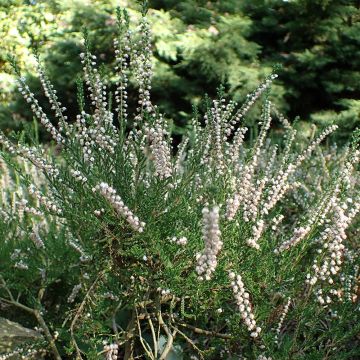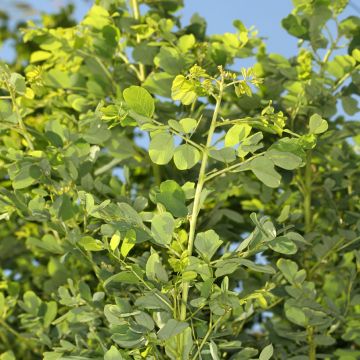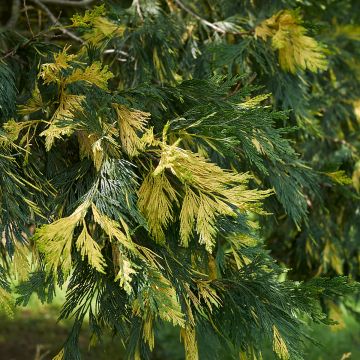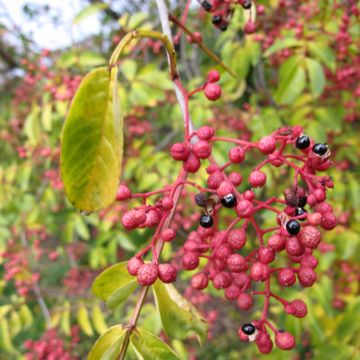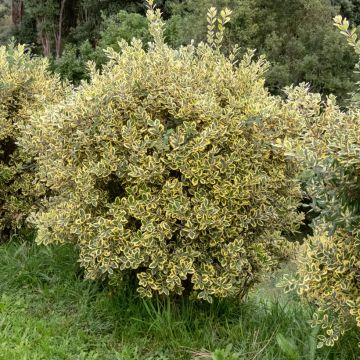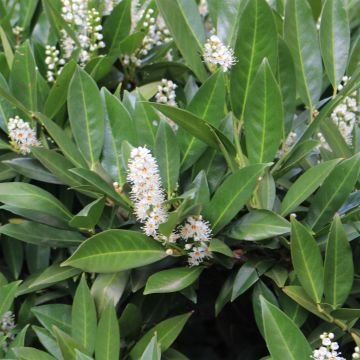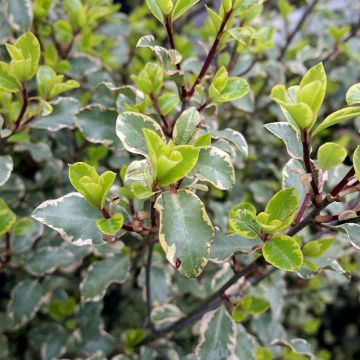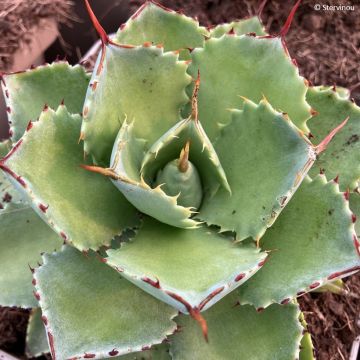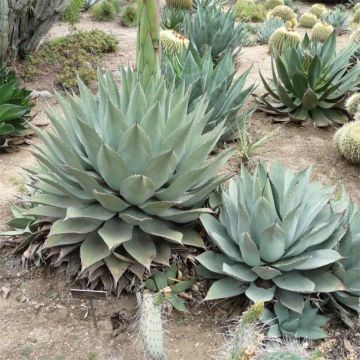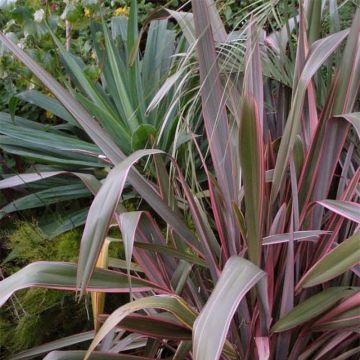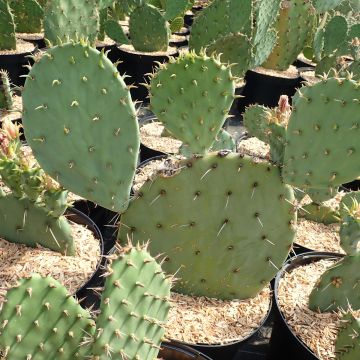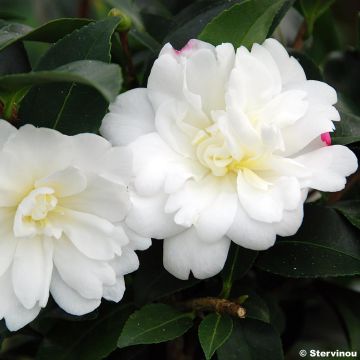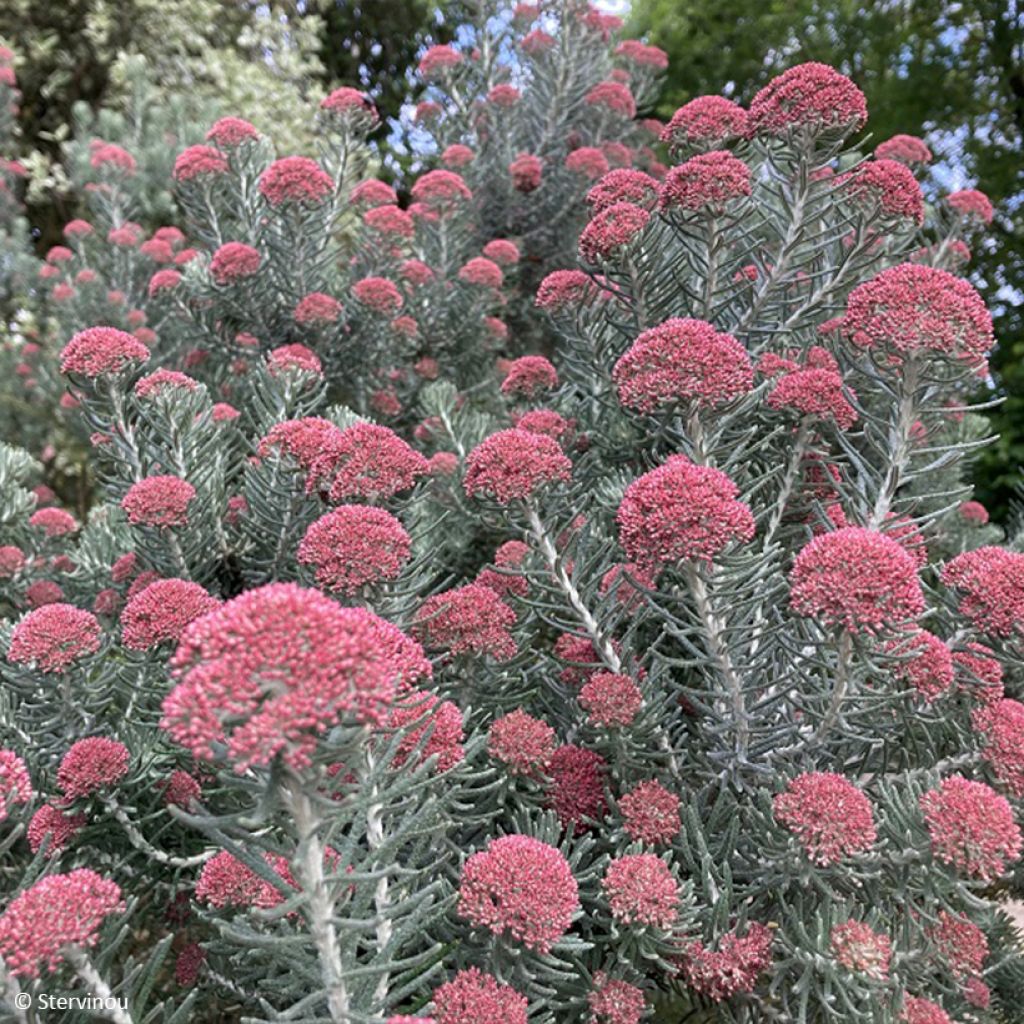

Ozothamnus rosmarinifolius Silver Jubilee
Ozothamnus rosmarinifolius Silver Jubilee
Ozothamnus rosmarinifolius Silver Jubilee
Rosemary Ozothamnus, Sea Rosemary, Seafoam Statice
This item cannot be shipped to the selected country
Delivery charge from €5.90
More information
Schedule delivery date,
and select date in basket
This plant carries a 24 months recovery warranty
More information
We guarantee the quality of our plants for a full growing cycle, and will replace at our expense any plant that fails to recover under normal climatic and planting conditions.
From €5.90 for pickup delivery and €6.90 for home delivery
Express home delivery from €8.90.
Does this plant fit my garden?
Set up your Plantfit profile →
Description
Ozothamnus rosmarinifolius 'Silver Jubilee' is an elegant evergreen bush from a maritime climate, also known as the Rice Flower with Rosemary-like Leaves. From a distance, it somewhat resembles a giant cotton lavender, dressed in silver-grey. Its tiny leaves, as well as its stems, are covered in a short gray wool. It becomes even more decorative when its pinkish flower buds form, which open into small white clusters. Perfectly suited for coastal areas, especially the Mediterranean coast, it can be planted on slopes, in rockeries, or as a hedge.
Ozothamnus rosmarinifolius 'Silver Jubilee' is a very silver selection obtained from seeds collected in the wild in the South Port Bluff region of Southeast Tasmania in 1978. The species is native to southeastern Australia and Tasmania. It thrives in well-drained, sandy or rocky soil and can tolerate brief frosts of around -10 to -12 °C in these conditions. The 'Silver Jubilee' variety forms an upright, egg-shaped bush with a fairly regular habit, fine texture, and multiple vertical, branching stems. Its growth is relatively slow, reaching between 1.50 m and 2 m in height and 1 m to 1.50 m in width. Its slender, grey to whitish branches bear small narrow leaves that are greyish on the upper side and almost white on the underside. The vegetation becomes more silver in dry and hot conditions. Flowering occurs between June and July. At the end of each branch, a corymb composed of very small flower heads forms. When in bud stage, their colour is a reddish pink, perfectly complementing the silver foliage. The buds open into tiny flower heads that are slightly grayish-white and turn rusty as the seeds form.
The Rice Flower with Rosemary-like Leaves 'Silver Jubilee' is an original, drought-resistant plant, more resilient than one might think. If the soil it is planted in is sufficiently dry in winter, it can be grown in open ground inland. In a coastal garden, create a beautiful shrub bed by combining it with a Euryops pectinatus daisy, a Coleonema pulchrum confetti bush, a 'Sunset' pulverulent cistus, a 'Bowles Mauve' wallflower, and a tall 'Meerlo' lavender, for example. In a medium-sized hedge, this Ozothamnus can be accompanied by New Zealand myrtles (Leptospermum), Oléaria scillionensis, and callistemon rigidus.
Report an error about the product description
Plant habit
Flowering
Foliage
Botanical data
Ozothamnus
rosmarinifolius
Silver Jubilee
Asteraceae
Rosemary Ozothamnus, Sea Rosemary, Seafoam Statice
Helychrisum rosmarinifolium 'Silver Jubilee'
Western Europe
Other Shrubs A to Z
Planting and care
Ozothamnus rosmarinifolius 'Silver Jubilee' will thrive in a sunny, well-drained, sandy or rocky soil that does not retain too much water. Its roots don't like excess moisture. Once well-rooted, this bush tolerates drought very well. Nevertheless, it will need regular watering to help it establish, allowing the soil to dry between two abundant waterings. Limestone is tolerated. It is hardy to -10°C or -12°C once mature. However, it will be better, in regions with cold and humid winters, to cultivate it in a large pot to store it during the winter, in a bright but unheated room. To shape it, shorten the stems just after flowering to encourage the plant to branch out.
Cultivation in pots:
Provide good drainage at the bottom of a large pot, as the plant offers a large surface area to the wind. Use a lightweight substrate, enriched with coarse sand and leaf compost, and apply a little slow-release fertiliser in late winter and autumn. Water generously in summer, allowing the soil to dry out a little between two waterings.
Planting period
Intended location
Care
This item has not been reviewed yet - be the first to leave a review about it.
Evergreen shrubs
Haven't found what you were looking for?
Hardiness is the lowest winter temperature a plant can endure without suffering serious damage or even dying. However, hardiness is affected by location (a sheltered area, such as a patio), protection (winter cover) and soil type (hardiness is improved by well-drained soil).

Photo Sharing Terms & Conditions
In order to encourage gardeners to interact and share their experiences, Promesse de fleurs offers various media enabling content to be uploaded onto its Site - in particular via the ‘Photo sharing’ module.
The User agrees to refrain from:
- Posting any content that is illegal, prejudicial, insulting, racist, inciteful to hatred, revisionist, contrary to public decency, that infringes on privacy or on the privacy rights of third parties, in particular the publicity rights of persons and goods, intellectual property rights, or the right to privacy.
- Submitting content on behalf of a third party;
- Impersonate the identity of a third party and/or publish any personal information about a third party;
In general, the User undertakes to refrain from any unethical behaviour.
All Content (in particular text, comments, files, images, photos, videos, creative works, etc.), which may be subject to property or intellectual property rights, image or other private rights, shall remain the property of the User, subject to the limited rights granted by the terms of the licence granted by Promesse de fleurs as stated below. Users are at liberty to publish or not to publish such Content on the Site, notably via the ‘Photo Sharing’ facility, and accept that this Content shall be made public and freely accessible, notably on the Internet.
Users further acknowledge, undertake to have ,and guarantee that they hold all necessary rights and permissions to publish such material on the Site, in particular with regard to the legislation in force pertaining to any privacy, property, intellectual property, image, or contractual rights, or rights of any other nature. By publishing such Content on the Site, Users acknowledge accepting full liability as publishers of the Content within the meaning of the law, and grant Promesse de fleurs, free of charge, an inclusive, worldwide licence for the said Content for the entire duration of its publication, including all reproduction, representation, up/downloading, displaying, performing, transmission, and storage rights.
Users also grant permission for their name to be linked to the Content and accept that this link may not always be made available.
By engaging in posting material, Users consent to their Content becoming automatically accessible on the Internet, in particular on other sites and/or blogs and/or web pages of the Promesse de fleurs site, including in particular social pages and the Promesse de fleurs catalogue.
Users may secure the removal of entrusted content free of charge by issuing a simple request via our contact form.
The flowering period indicated on our website applies to countries and regions located in USDA zone 8 (France, the United Kingdom, Ireland, the Netherlands, etc.)
It will vary according to where you live:
- In zones 9 to 10 (Italy, Spain, Greece, etc.), flowering will occur about 2 to 4 weeks earlier.
- In zones 6 to 7 (Germany, Poland, Slovenia, and lower mountainous regions), flowering will be delayed by 2 to 3 weeks.
- In zone 5 (Central Europe, Scandinavia), blooming will be delayed by 3 to 5 weeks.
In temperate climates, pruning of spring-flowering shrubs (forsythia, spireas, etc.) should be done just after flowering.
Pruning of summer-flowering shrubs (Indian Lilac, Perovskia, etc.) can be done in winter or spring.
In cold regions as well as with frost-sensitive plants, avoid pruning too early when severe frosts may still occur.
The planting period indicated on our website applies to countries and regions located in USDA zone 8 (France, United Kingdom, Ireland, Netherlands).
It will vary according to where you live:
- In Mediterranean zones (Marseille, Madrid, Milan, etc.), autumn and winter are the best planting periods.
- In continental zones (Strasbourg, Munich, Vienna, etc.), delay planting by 2 to 3 weeks in spring and bring it forward by 2 to 4 weeks in autumn.
- In mountainous regions (the Alps, Pyrenees, Carpathians, etc.), it is best to plant in late spring (May-June) or late summer (August-September).
The harvesting period indicated on our website applies to countries and regions in USDA zone 8 (France, England, Ireland, the Netherlands).
In colder areas (Scandinavia, Poland, Austria...) fruit and vegetable harvests are likely to be delayed by 3-4 weeks.
In warmer areas (Italy, Spain, Greece, etc.), harvesting will probably take place earlier, depending on weather conditions.
The sowing periods indicated on our website apply to countries and regions within USDA Zone 8 (France, UK, Ireland, Netherlands).
In colder areas (Scandinavia, Poland, Austria...), delay any outdoor sowing by 3-4 weeks, or sow under glass.
In warmer climes (Italy, Spain, Greece, etc.), bring outdoor sowing forward by a few weeks.


































